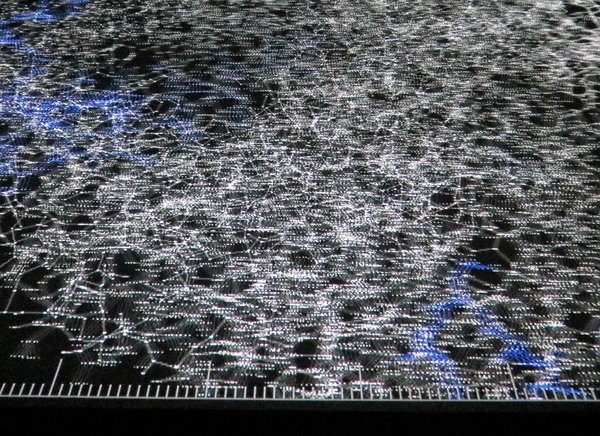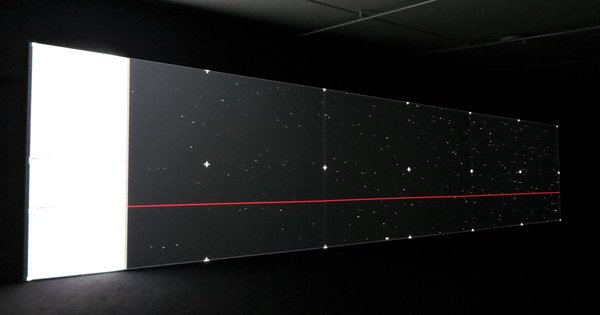Data is all around us. We are at the mercy of an unmanageable stream of information shared through online social media platforms, television screens, advertisements and so on, trapped within an invisible network of digital signals that affect us in unimaginable ways. It is a constant bombardment: images, graphs, codes, noise and light itself. Zillions of ‘ones and zeros’ traversing our bodies throughout the day. This constant stream of data is precisely the subject matter of the work of Japanese artist Ryoji Ikeda (1966), recently exhibited at the Eye Filmmuseum in Amsterdam.
Ikeda film installations completely changed the feel of the museum. They provided a constant stream of digital light and noise, flooding the gallery space, an immersive experience reminiscent of Tron (1982). Ikeda’s work sucks you in, almost literally. I felt powerless by the monumentality of his projections, but, at the same time, mesmerised by the beauty of his electronic mosaics. The stuff of fantastic dreams and dreadful nightmares, all at once.
For me, Ikeda’s most powerful work is his point of no return (2018), an audio-visual installation comprising a DLP projector, a computer, speakers and a strong HMI lamp. My experience was so extreme that I had an acute migraine attack. I rushed home to avoid vomiting in public. Ikeda’s show triggered an excessive somatic response. Nevertheless, amazing!
[The images included here do not do justice to the experience of Ikeda’s work].








Ryoji Ikeda | Ikeda at the EYE Filmmuseum | EYE Film Institute | Tron | DLP projector | HMI lamp | Migraine

